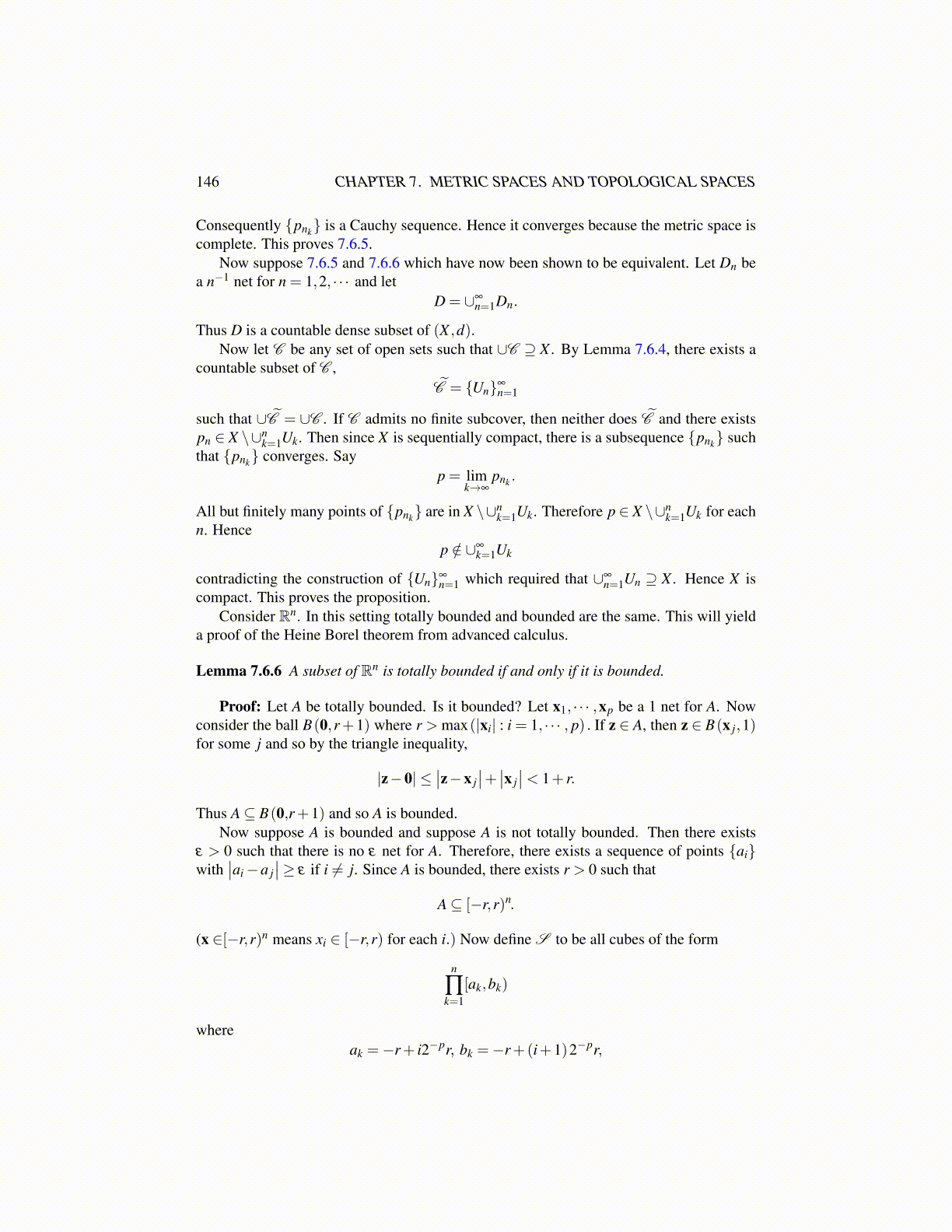
146 CHAPTER 7. METRIC SPACES AND TOPOLOGICAL SPACES
Consequently {pnk} is a Cauchy sequence. Hence it converges because the metric space iscomplete. This proves 7.6.5.
Now suppose 7.6.5 and 7.6.6 which have now been shown to be equivalent. Let Dn bea n−1 net for n = 1,2, · · · and let
D = ∪∞n=1Dn.
Thus D is a countable dense subset of (X ,d).Now let C be any set of open sets such that ∪C ⊇ X . By Lemma 7.6.4, there exists a
countable subset of C ,C̃ = {Un}∞
n=1
such that ∪C̃ = ∪C . If C admits no finite subcover, then neither does C̃ and there existspn ∈ X \∪n
k=1Uk. Then since X is sequentially compact, there is a subsequence {pnk} suchthat {pnk} converges. Say
p = limk→∞
pnk .
All but finitely many points of {pnk} are in X \∪nk=1Uk. Therefore p ∈ X \∪n
k=1Uk for eachn. Hence
p /∈ ∪∞k=1Uk
contradicting the construction of {Un}∞n=1 which required that ∪∞
n=1Un ⊇ X . Hence X iscompact. This proves the proposition.
Consider Rn. In this setting totally bounded and bounded are the same. This will yielda proof of the Heine Borel theorem from advanced calculus.
Lemma 7.6.6 A subset of Rn is totally bounded if and only if it is bounded.
Proof: Let A be totally bounded. Is it bounded? Let x1, · · · ,xp be a 1 net for A. Nowconsider the ball B(0,r+1) where r > max(|xi| : i = 1, · · · , p) . If z ∈ A, then z ∈ B(x j,1)for some j and so by the triangle inequality,
|z−0| ≤∣∣z−x j
∣∣+ ∣∣x j∣∣< 1+ r.
Thus A⊆ B(0,r+1) and so A is bounded.Now suppose A is bounded and suppose A is not totally bounded. Then there exists
ε > 0 such that there is no ε net for A. Therefore, there exists a sequence of points {ai}with
∣∣ai−a j∣∣≥ ε if i ̸= j. Since A is bounded, there exists r > 0 such that
A⊆ [−r,r)n.
(x ∈[−r,r)n means xi ∈ [−r,r) for each i.) Now define S to be all cubes of the form
n
∏k=1
[ak,bk)
whereak =−r+ i2−pr, bk =−r+(i+1)2−pr,